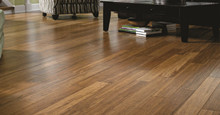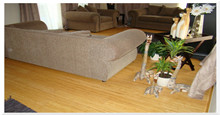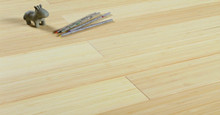Bamboo has grown in popularity as a material for outdoor decking among both designers and homeowners. Bamboo, which is well-known for its strength, sustainability, and elegant look, can turn any outdoor space into a chic and useful place. But when choosing bamboo decking, you might have to make a seemingly simple choice: should you go with decking boards that are 18 or 20 mm thick? Even while the thickness difference might not seem like much, it can have a big effect on your deck‘s installation, cost, and performance.
To assist you in choosing the best option for your project, we will examine the distinctions between 18mm and 20mm outdoor bamboo decking in this blog.
Knowing the Thickness of Bamboo Decking
Let‘s first examine why decking thickness is important before getting into the details. The strength, longevity, and general performance of decking boards are significantly influenced by their thickness. Although both 18mm and 20mm decking boards are appropriate for outdoor usage, the small thickness difference may have an impact on things like weight capacity, durability, and even installation.
Specifically, bamboo decking is designed to be sturdy and stable. Dense and long-lasting boards are made by compressing and bonding bamboo fibres. A slight variation in thickness can have a significant impact on the material‘s behaviour over time, particularly when it is exposed to external factors like sunlight, rain, and temperature changes.
Important Distinctions 18 mm to 20 mm bamboo decking
Let‘s examine these two thicknesses in more detail, taking into account a number of factors:
1. Sturdiness and Power
Bamboo Decking, 18mm: Although 18mm boards are robust and long-lasting, they are marginally thinner than their 20mm equivalents. As a result, they might be more appropriate for locations with less foot traffic because of their somewhat lower load-bearing capacity. 18mm boards can withstand a lot of foot activity and heavy furniture if you‘re installing a deck in a residential area.
Bamboo Decking 20mm: These boards are stronger and more durable because of the additional 2mm of thickness. They are more resilient to deterioration over time and are better suited to manage larger loads. 20mm boards are a superior option for commercial applications, high-traffic areas, or locations where you intend to set up large objects like grills or outdoor furniture.
2. Beauty and Appearance
The apparent difference in thickness is not noticeable. However, the additional thickness of 20mm boards might give your deck a more solid and upscale appearance, depending on its design. Additionally, thicker boards could have a somewhat more noticeable grain pattern, which adds to bamboo‘s inherent beauty.
Nevertheless, 18mm boards might be more appropriate if you‘re aiming for a lightweight or minimalist look because they can make the deck look sleeker and more subtle.
3. Compatibility and Installation
Bamboo Decking, 18mm: 18mm boards are lighter and easier to handle during installation because of their thinner profile. Additionally, they frequently work well with a wider variety of substructures, such as wood or metal joists spaced closer together. If you are working with an existing structure or retrofitting your project, 18mm boards can be a more adaptable option.
Bamboo Decking 20mm: Because of their increased thickness, 20mm boards can need stronger substructures to guarantee adequate support. Because you might have to use stronger joists or space them closer together, this could lead to somewhat higher installation expenses. The benefit, though, is a stronger deck that can withstand more abrasions over time.
4. Financial Aspects
The price difference between 18mm and 20mm bamboo decking is frequently insignificant, but it is still important to note. Generally speaking, thicker boards cost a little more since they need more raw materials and processing. It may be more cost-effective to use 18mm boards if you have a limited budget.
But it‘s crucial to take the long-term value into account. Long-term cost savings may result from fewer repairs and replacements due to the increased longevity of 20mm boards.
5. The ability to withstand environmental influences
While both 18mm and 20mm bamboo decking are made to survive outdoor environments, 20mm boards‘ increased thickness may offer a marginally stronger defence against warping, cracking, and moisture damage. In areas with harsh weather, this can be particularly crucial. 20mm boards might provide greater long-term performance if your deck will be subjected to severe weather conditions, such as heavy rain, bright sunlight, or large temperature swings.
What Should You Pick?
The choice between 18mm and 20mm bamboo decking ultimately comes down to your project‘s requirements, financial constraints, and style. To aid in your decision-making, consider the following general guidelines:
Select 18mm bamboo decking if: There will be moderate foot traffic on your deck in a residential area.
The foundation you‘re working with isn‘t designed to support thicker boards.
You want a less expensive solution without compromising on quality.
You like designs that are simpler and lighter.
Select 20mm bamboo decking if your deck will be in a business environment or a high-traffic location.
You intend to use the deck to store bulky furnishings or machinery.
You desire long-term performance and optimum durability.
You can design the substructure of your new deck to accommodate thicker planks.
The strength, longevity, and general functionality of your deck can all be greatly impacted by the seemingly insignificant difference between 18mm and 20mm bamboo decking. You can select the thickness that best meets your demands by carefully weighing variables including weight capacity, installation requirements, and environmental conditions.
Bamboo decking is a fashionable and sustainable option that will improve your outdoor living area for many years to come, regardless of whether you choose 18mm or 20mm boards.



